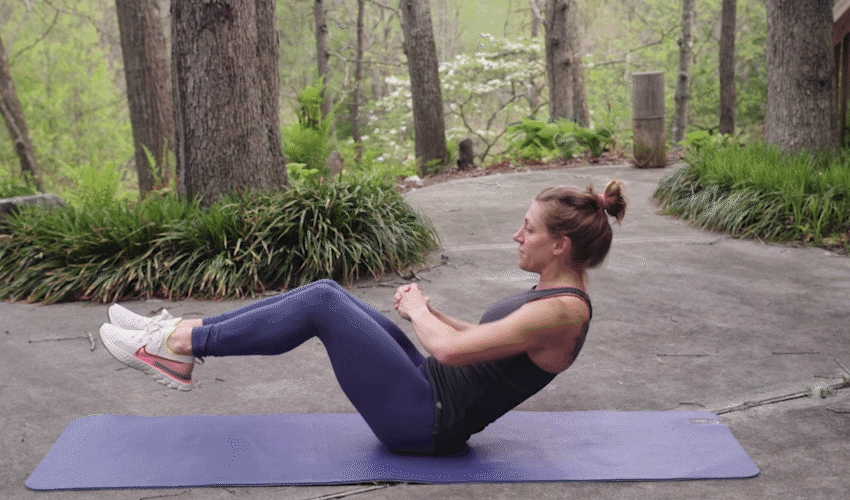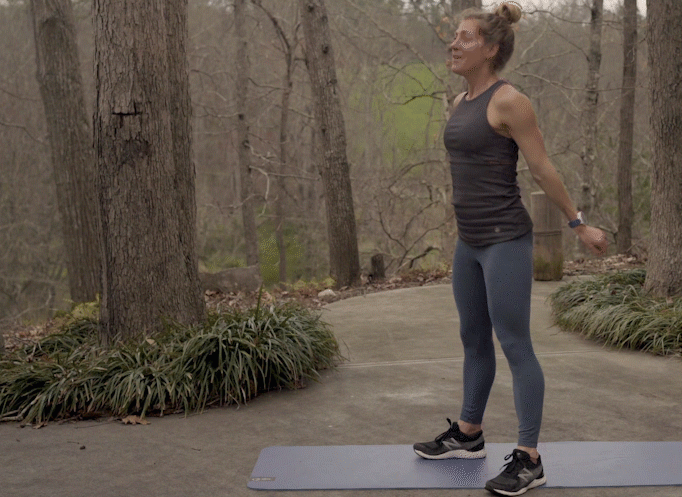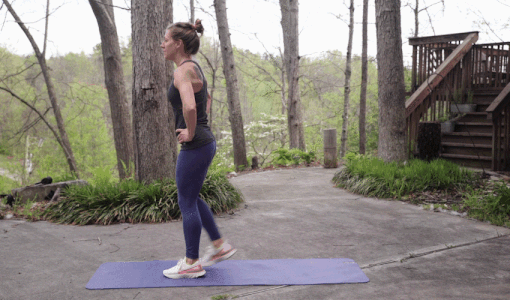
Strength training isn’t just for competitive weightlifters and gym rats. Runners can also see huge gains in their performance from simple (and consistent) strength training and weightlifting routines.
Whether you have access to a full gym with weights or you’re doing bodyweight workouts in your living room, there are plenty of great strength training exercises for runners that will help you topple PRs or just run easier.
Strength training helps improve many aspects of your running, including:
- Power
- Speed
- Endurance
- Balance
- Injury prevention
One concern runners have, though, is that strength training will pack on muscle and increase bodyweight. But with the proper strength and resistance workouts for runners, you’ll add lean muscle that will improve your efficiency without weighing you down.
Rather than pumping out heavy sets of bench presses or doing preacher curls until failure, these strength training moves for runners target the essential muscle groups that will make you stronger and faster.
Running also doesn’t work single muscles in isolation; it recruits lots of muscles that have to work together to propel you forward.
Start your strength training routine by doing these workouts twice a week, either on your off days or after your runs if you have some energy left.
Core Workouts for Runners
Think your core is just that set of six-pack abs? Think again.
Your core is an important group of muscles from your hips to your chest that helps protect and stabilize your spine. It’s essential whether you’re standing up from the sofa or picking up a bag of groceries.
Having a strong core will improve your balance and stability, which is critical for running efficiently and creating an even stride. The best part about doing these core workouts, though, is most don’t require any extra equipment, so you can get a high-quality workout with just your body and a floor.
1. Plank

Target muscles: Abs, back, shoulders
The plank is a classic core workout for runners because it works nearly every muscle in your core as they work to keep your body suspended. Try a standard plank on your forearms, or work up to plank variations like plank walk-ups.
2. Glute Bridge

Target muscles: Hips, glutes, lower back
Your glutes play a major role in how efficiently you run, and the glute bridge is a great exercise for keeping your glutes and lower back in top shape. Once you’ve mastered the two-leg bridge, try the single-leg glute bridge variant.
3. Russian Twists

Target muscles: Abs, obliques
Improve your overall balance and support your spine with Russian twists. Sit on the floor with your legs off the ground, and twist your torso from side to side. Add a medicine ball or small weight to make it more difficult.
Leg Workouts for Runners
Your legs do a ton of work when you run, so building lean muscles in your legs is crucial for increasing your power and endurance.
Moves like squats and lunges are efficient leg workouts for runners because they target most of the major (and minor) muscles in your lower body at the same time. You can also ramp up the intensity by doing them faster, or you can increase the difficulty with one-leg variants to work your balance.
Whether you're doing squats, deadlifts or wall sits, you can find tons of great leg workouts for runners here.
1. Squats

Target muscles: Quads, glutes, hamstrings, calves
Squats are an effective and challenging workout that targets every muscle in your legs. Stand with your feet hip-width apart, and then drop your hips back like you’re sitting in a chair. Keep your knees from tracking past your toes.
Like many of these workouts, you can ramp up the difficulty of squats by doing them quicker, adding weight or using only one leg (called a pistol or single-leg squat).
2. Single-Leg Deadlifts

Target muscles: Back, core, hamstrings
Like squats, single-leg deadlifts activate most of the muscles in your legs and core, making them an efficient part of a full-body workout.
Stand with your feet hip-width apart. Begin the move by lifting one leg behind you as you hinge forward at the hip. Keep your head, shoulders, hip and leg in a straight line as you lower your upper body until it’s parallel with the floor. Return to standing and repeat on the other leg.
3. Reverse Lunge

Target muscles: Glutes, hamstrings, core
Lunges challenge your balance while also working the big muscles in your legs, like your glutes and hamstrings. Doing these reverse lunges works the same muscles but reduces the impact on your joints.
Start by standing with your feet shoulder-width apart. Step one foot back and drop your hips back until your thigh of your planted leg is parallel with the ground. Push forward with your back leg to return to standing, and repeat on the other leg.
Cross Training for Runners
Running requires repetition of the same motion, which means you can end up doing the same thing thousands of times in a single workout. If you're struggling with muscle imbalances or fatigue, you can end up getting hurt.
Cross training for runners involves breaking out of the same movement patterns and giving your other muscles some work, too, while maintaining your aerobic fitness. Cross training can be low-impact endurance activities, like cycling or swimming, or you can up the intensity with explosive plyometric exercises.
Here are some of the most popular cross-training exercises for runners:
- Yoga
- Mobility and stability training
- Plyometric drills
- and more
Yoga for Runners

Low-impact, but high-reward, yoga helps strengthen and activate underused muscles while improving flexibility and mobility.
As a bonus, the conscious breathing in yoga promotes a relaxed mental state, increased focus and improved body awareness.
Yoga improves many aspects of your running, including:
- Strength
- Flexibility
- Balance
- Body awareness
- Relaxation and recovery
Jump to yoga for runners
Mobility and Stability

Running only moves you forward, which can lead to tightness and underdeveloped muscles in parts of your body. Strength and mobility exercises can help fix that.
Using only your body weight or resistance bands, runners can significantly increase their degree of mobility and stability, which can have a major effect on their movement patterns. Runners can see improvements from mobility and stability exercises, including:
- Muscle Strength
- Injury prevention
- Increased range of motion
- Balance
- Power
- Speed
Plyometric Exercises

Plyometrics is also known as jump training because it requires your muscles to exert maximum force in a very short period of time, like when you jump.
These plyometrics drills for runners will get your heart rate going and prep you for a tough running workout. They can also help boost your:
- Speed
- Power
- Running economy
- Balance
Jump to plyometric workouts for runners